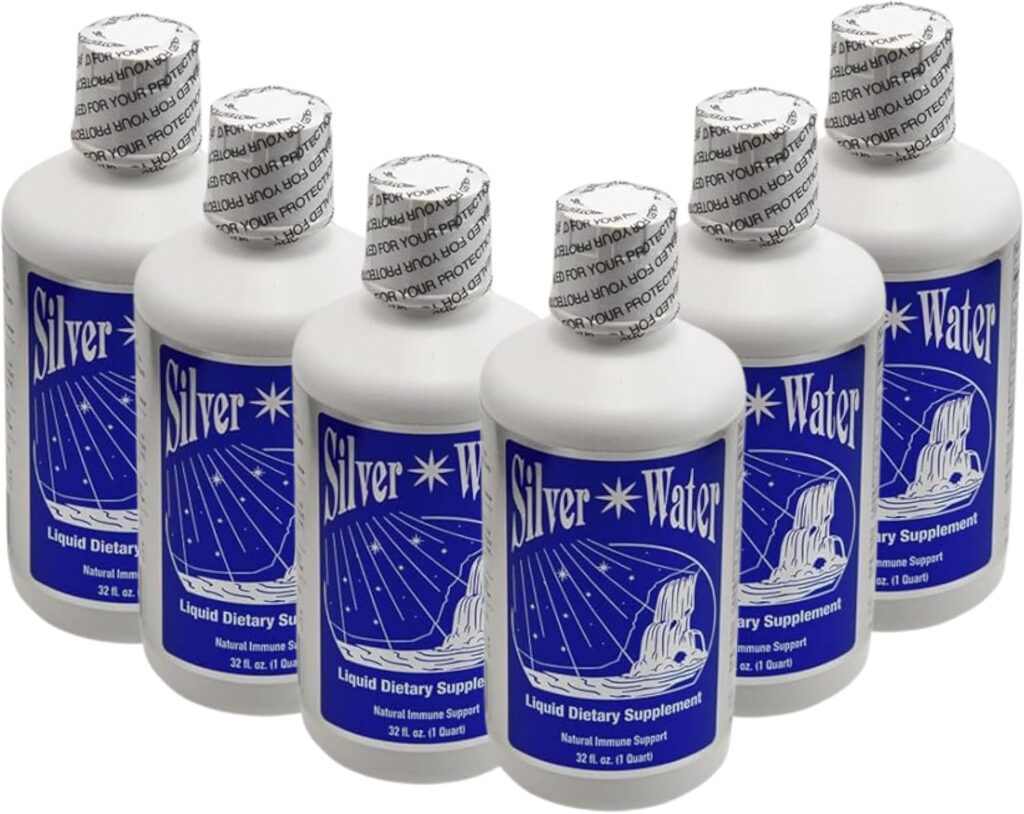Silver, a precious metal known for its lustrous beauty, has a legacy far beyond its ornamental appeal. Silver has been celebrated throughout history for its remarkable properties, particularly its ability to preserve and protect. Silver has been a silent guardian of health from ancient civilizations to modern times, safeguarding against the unseen forces of decay and disease.
Silver’s Noble Legacy
The ancient Greeks and Romans were among the first to recognize silver’s unique qualities. They used silver containers to store liquids, keeping them fresh and safe from spoilage. This practice was not merely a luxury but a necessity, as it helped prevent the growth of harmful microorganisms. Over the centuries, this tradition was carried forward by royal households, where silver symbolized wealth and health. Aristocrats dined with silver utensils, drank from silver cups, and even had their food served on silver plates. This led to the term “blue bloods,” as the skin of these privileged individuals often took on a bluish hue due to the minute traces of silver they ingested.
In America’s pioneering days, silver continued to play a vital role. Settlers moving westward would drop silver dollars into their milk containers to delay spoilage, a testament to silver’s time-tested antibacterial properties.
Medical Use of Colloidal Silver Water
By the early 20th century, silver had earned its place as a proven germ-fighter in medicine. Colloidal silver, a solution of tiny silver particles suspended in water, became a staple in bacterial treatment. Though considered high-tech at the time, these early solutions were not as advanced as those available today. The silver particles were not as finely dispersed, limiting their absorption and effectiveness.
Despite these limitations, colloidal silver was highly regarded for its ability to combat many pathogens. Dr. Henry Crooks, a pioneer in colloidal chemistry, wrote in 1910 that colloidal silver could kill various bacteria, including the dreaded Staphylococcus and Streptococcus, within minutes. His findings highlighted the germicidal power of silver without any harmful effects on humans.
Alfred Searle, the founder of the pharmaceutical company Searle, further documented the astonishing success of colloidal silver in his 1919 book, The Use of Colloids in Health and Disease. Searle noted that colloidal silver was effective against parasites when administered orally or hypodermically, and it was remarkably stable and non-toxic.
The Rise, Fall, and Rebirth of Colloidal Silver
As the pharmaceutical industry evolved, the production of colloidal silver became prohibitively expensive, and the industry began to favor cheaper, patentable drugs. Improper manufacturing and misusing colloidal silver led to cases of argyria, where the skin turns a bluish-gray due to excessive silver accumulation. As a result, colloidal silver fell out of favor despite its proven efficacy.
However, the story of colloidal silver did not end there. In the 1970s, its value was rediscovered by doctors at Washington University in St. Louis, Missouri, while searching for effective treatments for burn victims. This resurgence was supported by biomedical research, which revealed that no known disease-causing organism—whether bacterial, viral, or fungal—could survive in the presence of even minute traces of metallic silver.
In 1978, Science Digest published an article titled “Our Mightiest Germ Fighter,” in which Jim Powell extolled the virtues of silver, noting that it could kill over 650 different disease organisms. Silver showed no such weakness unlike antibiotics, to which bacteria can develop resistance. Moreover, it was virtually non-toxic, making it a powerful tool in the fight against infections.
The Science Behind the Silver
“Colloid” refers to a substance composed of ultra-fine particles suspended in a liquid. In the case of colloidal silver, these particles are silver atoms or molecules so tiny that the naked eye cannot see them. Adequately manufactured colloidal silver consists of a minuscule number of submicroscopic silver particles (3 to 5 parts per million) suspended in pure water, each charged to remain in suspension.
The ideal particle size for colloidal silver is 0.005 to 0.015 microns in diameter. This phenomenon, known as Brownian movement, keeps the particles in motion, ensuring they remain suspended in the solution almost indefinitely.
The Silver Colloidal Future
The resurgence of interest in colloidal silver continues as more research highlights its potential benefits. Dr. Larry C. Ford of UCLA’s School of Medicine found silver solutions effective against various bacteria and fungi, including those responsible for some of the most stubborn infections.
Dr. Robert O. Becker, a biomedical researcher from Syracuse University, made groundbreaking discoveries about silver’s role in stimulating bone growth and accelerating the healing of injured tissues. His research showed that silver killed disease-causing organisms and promoted the regeneration of healthy cells, offering hope for previously considered untreatable conditions.
Colloidal silver, with its rich history and proven effectiveness, substantiates medicinal credibility and natural remedies’ enduring power. While modern medicine has brought us many advances, the simple, age-old use of silver as a germ-fighter and healer remains relevant today. As research continues, colloidal silver may well reclaim its place as a cornerstone of natural health, offering a silver lining in the pursuit of wellness.

